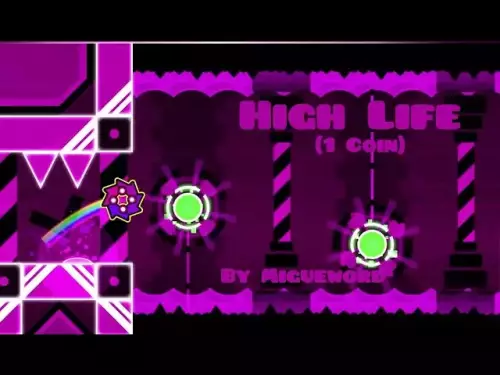-
 bitcoin
bitcoin $115639.180809 USD
-0.09% -
 ethereum
ethereum $4488.191456 USD
0.32% -
 xrp
xrp $2.988822 USD
-0.32% -
 tether
tether $1.000468 USD
0.01% -
 bnb
bnb $1056.260800 USD
7.05% -
 solana
solana $240.340137 USD
0.27% -
 usd-coin
usd-coin $0.999908 USD
0.01% -
 dogecoin
dogecoin $0.268540 USD
0.80% -
 tron
tron $0.346665 USD
0.75% -
 cardano
cardano $0.894691 USD
-0.17% -
 hyperliquid
hyperliquid $53.961336 USD
-3.90% -
 chainlink
chainlink $23.406743 USD
-0.78% -
 ethena-usde
ethena-usde $1.000949 USD
-0.01% -
 avalanche
avalanche $33.027412 USD
-2.60% -
 sui
sui $3.660269 USD
-0.44%
Techniques for identifying tops and bottoms in the Bitcoin on-chain NVT model
A persistently low NVT ratio, combined with rising active addresses and stable hash rate, signals organic demand resurgence and a potential bullish reversal after market bottoms.
Sep 20, 2025 at 07:54 pm

Understanding the NVT Model in Bitcoin Analysis
1. The Network Value to Transactions (NVT) ratio is often described as the 'P/E ratio' of the cryptocurrency market, drawing a parallel to traditional financial valuation metrics. It divides the network value (market capitalization) of Bitcoin by the daily transaction volume on its blockchain. A high NVT suggests that the network value is elevated relative to transaction activity, potentially signaling overvaluation. Conversely, a low NVT may indicate undervaluation, especially if transaction volumes remain strong.
2. On-chain data plays a crucial role in interpreting the NVT ratio accurately. Unlike price-based indicators, on-chain metrics reflect actual user behavior and economic activity within the Bitcoin network. When analyzing NVT, it’s essential to distinguish between speculative trading volume and genuine economic throughput. For instance, large volumes from exchange internal transfers do not contribute meaningfully to real transaction demand.
3. The raw NVT ratio can be volatile due to sudden spikes or drops in transaction volume. To smooth this out, analysts often use a moving average, such as the 90-day average of transaction volume, leading to what is known as the NVT Signal. This adjusted version provides clearer signals for identifying prolonged market tops and bottoms.
4. Historical analysis shows that extreme peaks in the NVT Signal have coincided with major market tops. During the 2017 and 2021 bull runs, NVT reached multi-year highs just before significant corrections. These peaks reflect a divergence between price appreciation and underlying transactional utility, suggesting euphoric market conditions detached from fundamentals.
5. Similarly, sustained lows in the NVT Signal have marked accumulation phases and potential market bottoms. These periods are characterized by declining prices while transaction volumes hold steady or even increase, indicating continued network usage despite bearish sentiment. Such conditions often precede renewed upward momentum once confidence returns.
Identifying Market Tops Using NVT Divergences
1. One effective technique for spotting impending tops involves observing divergences between Bitcoin’s price and the NVT ratio. When price reaches new highs but the NVT ratio fails to surpass its previous peak—or begins to decline—it signals weakening transactional support beneath the rally. This bearish divergence hints at speculative excess without corresponding growth in network utility.
2. Extended periods above historical NVT thresholds, such as readings exceeding 90 or 100 depending on the model variant, often correlate with overheated markets. These levels act as resistance zones where investor caution is warranted. Sustained time above these bands increases the probability of a correction.
3. Confirmation of a top can come from on-chain volume breakdowns. If transaction volume starts to drop while price remains elevated, the NVT ratio inflates rapidly. This decoupling indicates reduced economic activity supporting the valuation, reinforcing the likelihood of a reversal.
4. Whale movements detected through on-chain analytics can complement NVT signals. Large entities reducing holdings during high NVT environments suggest profit-taking, adding weight to the hypothesis of an imminent downturn. Monitoring wallet flows during these phases enhances signal reliability.
5. Short-term NVT surges following rapid price increases should be evaluated in context. Flash crashes or temporary volume dips can distort the ratio. Analysts must assess whether elevated NVT is due to collapsing volume or inflated market cap, using supplementary data like MVRV (Market Value to Realized Value) for confirmation.
Recognizing Market Bottoms Through NVT Compression
1. Market bottoms are frequently identified when the NVT ratio reaches multi-month or multi-year lows. These compression phases occur when network value declines sharply while transaction volume remains resilient, reflecting sustained utility despite price depreciation. Such conditions suggest capitulation may be nearing its end.
2. A flattening or rising transaction volume trend during a price downtrend strengthens the case for a bottom. It demonstrates that users continue transacting on the network, implying long-term confidence. When NVT stabilizes after a steep drop, it often marks a shift from fear-driven selling to value-based accumulation.
3. Cross-asset comparisons enhance interpretation. During macroeconomic stress, Bitcoin's NVT may dip alongside risk-off sentiment, but if transaction volume holds firm relative to other cryptocurrencies, it underscores relative strength. This resilience supports the notion of a healthy, demand-supported floor forming.
4. Miner behavior adds another layer of insight. Miners tend to sell more aggressively during low-price environments, increasing sell pressure. However, if NVT remains low despite miner outflows, it implies strong buy-side absorption, a bullish structural development visible only through on-chain scrutiny.
Persistent low NVT combined with rising active addresses and stable hash rate indicates organic demand re-emerging after a bear phase, offering a robust foundation for reversal setups.Frequently Asked Questions
What is considered a normal NVT range for Bitcoin?Historically, a healthy NVT Signal ranges between 35 and 55. Readings below 35 may suggest undervaluation, while those above 80 typically indicate overvaluation. These thresholds vary slightly across cycles due to adoption changes and macroeconomic factors.
Can NVT predict exact turning points?No single metric can pinpoint exact tops or bottoms with consistency. NVT works best as part of a broader on-chain framework. It identifies zones of vulnerability or opportunity rather than precise entry or exit moments.
How does stablecoin volume affect NVT calculations?Stablecoin transactions on Bitcoin’s network, though minimal compared to native BTC transfers, can skew volume data. Most NVT models focus on BTC-denominated transaction value, minimizing distortion from non-BTC payloads like USDT transfers via Omni Layer.
Is NVT applicable to other cryptocurrencies?While originally designed for Bitcoin, variations of NVT have been adapted for other blockchains. However, its effectiveness diminishes on networks with lower transparency, higher inflationary issuance, or artificial transaction generation, which compromise the integrity of both market cap and volume inputs.
Disclaimer:info@kdj.com
The information provided is not trading advice. kdj.com does not assume any responsibility for any investments made based on the information provided in this article. Cryptocurrencies are highly volatile and it is highly recommended that you invest with caution after thorough research!
If you believe that the content used on this website infringes your copyright, please contact us immediately (info@kdj.com) and we will delete it promptly.
- Snorter (SNORT): The Crypto Presale Aiming to Revolutionize Meme Coin Trading
- 2025-09-21 20:25:12
- BlockchainFX: The Trading Super App Primed to Make Millionaires?
- 2025-09-21 20:25:12
- Ozak AI Token: Riding the Wave of Returns in the Crypto Presale Frenzy
- 2025-09-21 20:30:14
- Crypto, Altcoins, and Retirement: Navigating the Digital Asset Landscape
- 2025-09-21 20:30:14
- PEPE Price, Market Cap, LBRETT: The Meme Coin Showdown in NYC
- 2025-09-21 20:35:12
- Altcoins, Token Unlocks, and the Fed Rate Cut: What's the Deal?
- 2025-09-21 19:05:16
Related knowledge

Practical parameter settings for a Bitcoin multi-timeframe moving average system
Sep 18,2025 at 10:54pm
Optimizing Timeframe Combinations for Bitcoin Trading1. Selecting appropriate timeframes is crucial when building a multi-timeframe moving average sys...

Techniques for identifying tops and bottoms in the Bitcoin on-chain NVT model
Sep 20,2025 at 07:54pm
Understanding the NVT Model in Bitcoin Analysis1. The Network Value to Transactions (NVT) ratio is often described as the 'P/E ratio' of the cryptocur...

What does the surge in open interest in Bitcoincoin futures mean?
Sep 20,2025 at 11:18pm
Understanding the Surge in Dogecoin Futures Open Interest1. A surge in open interest within Dogecoin futures indicates a growing number of active cont...

How can I use the Ethereum USDT premium to gauge market sentiment?
Sep 18,2025 at 11:55pm
Understanding the Ethereum USDT Premium1. The Ethereum USDT premium refers to the price difference between USDT (Tether) traded on Ethereum-based plat...

What should I do if Ethereum staking yields decline?
Sep 20,2025 at 06:18am
Understanding the Causes Behind Declining Ethereum Staking Yields1. The Ethereum network transitioned to a proof-of-stake consensus mechanism with the...

What should I do if a Bitcoin double top pattern breaks below its neckline?
Sep 20,2025 at 04:00pm
Understanding the Bitcoin Double Top Breakdown1. A double top pattern is a bearish reversal formation that appears after an extended uptrend. It consi...

Practical parameter settings for a Bitcoin multi-timeframe moving average system
Sep 18,2025 at 10:54pm
Optimizing Timeframe Combinations for Bitcoin Trading1. Selecting appropriate timeframes is crucial when building a multi-timeframe moving average sys...

Techniques for identifying tops and bottoms in the Bitcoin on-chain NVT model
Sep 20,2025 at 07:54pm
Understanding the NVT Model in Bitcoin Analysis1. The Network Value to Transactions (NVT) ratio is often described as the 'P/E ratio' of the cryptocur...

What does the surge in open interest in Bitcoincoin futures mean?
Sep 20,2025 at 11:18pm
Understanding the Surge in Dogecoin Futures Open Interest1. A surge in open interest within Dogecoin futures indicates a growing number of active cont...

How can I use the Ethereum USDT premium to gauge market sentiment?
Sep 18,2025 at 11:55pm
Understanding the Ethereum USDT Premium1. The Ethereum USDT premium refers to the price difference between USDT (Tether) traded on Ethereum-based plat...

What should I do if Ethereum staking yields decline?
Sep 20,2025 at 06:18am
Understanding the Causes Behind Declining Ethereum Staking Yields1. The Ethereum network transitioned to a proof-of-stake consensus mechanism with the...

What should I do if a Bitcoin double top pattern breaks below its neckline?
Sep 20,2025 at 04:00pm
Understanding the Bitcoin Double Top Breakdown1. A double top pattern is a bearish reversal formation that appears after an extended uptrend. It consi...
See all articles










































































